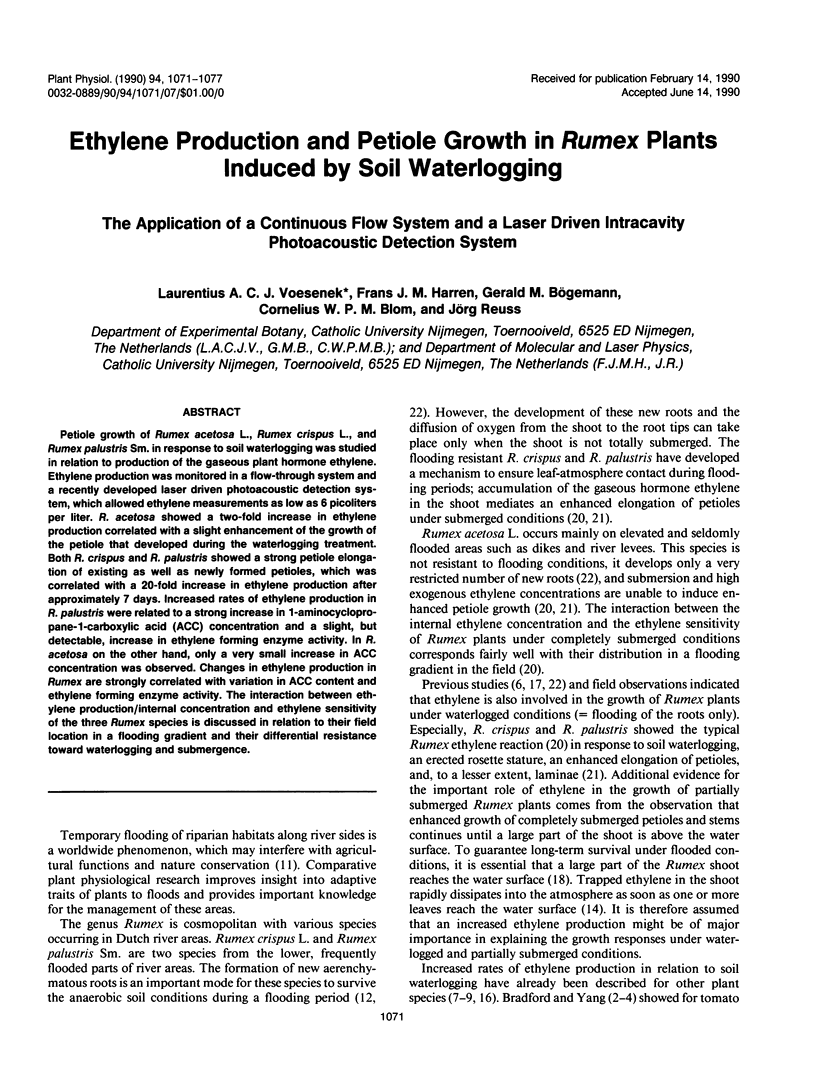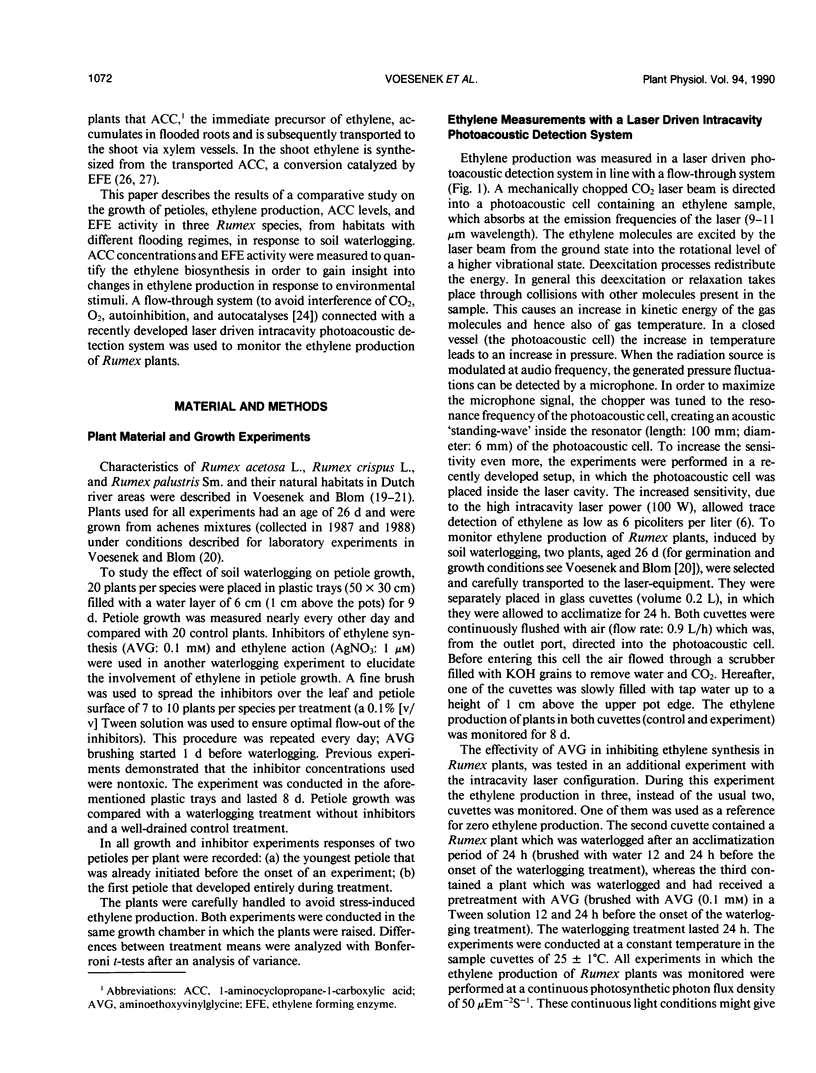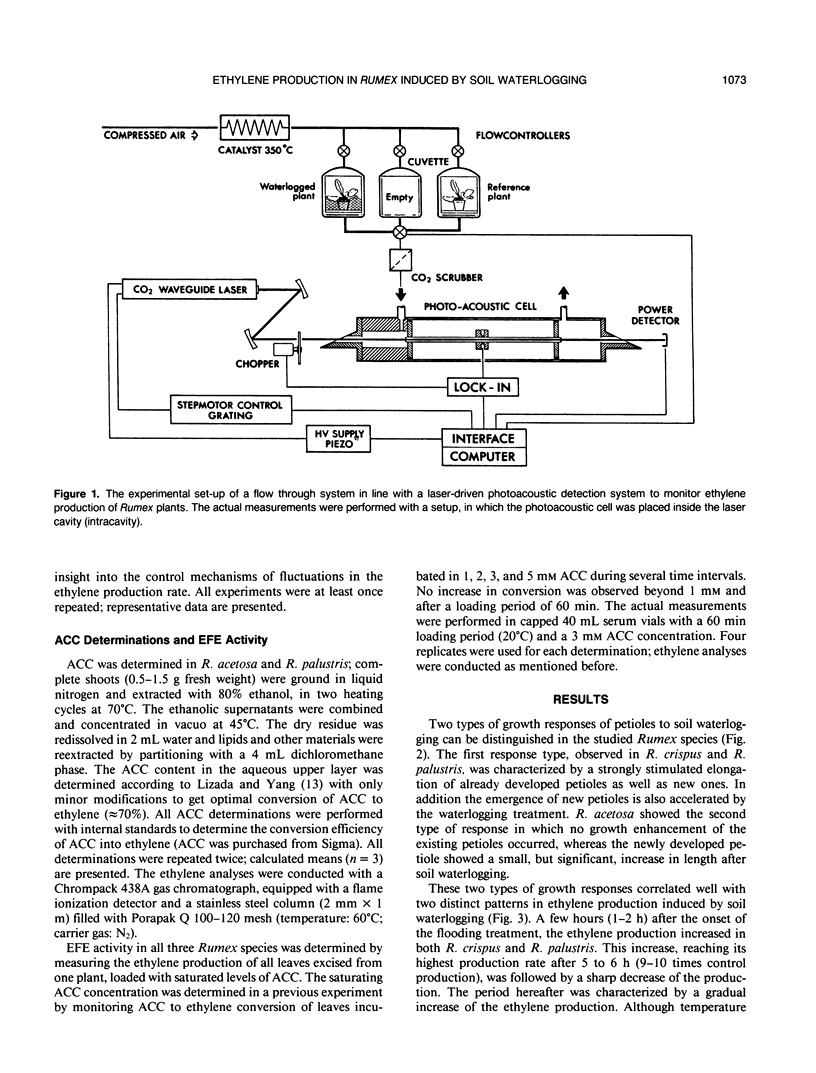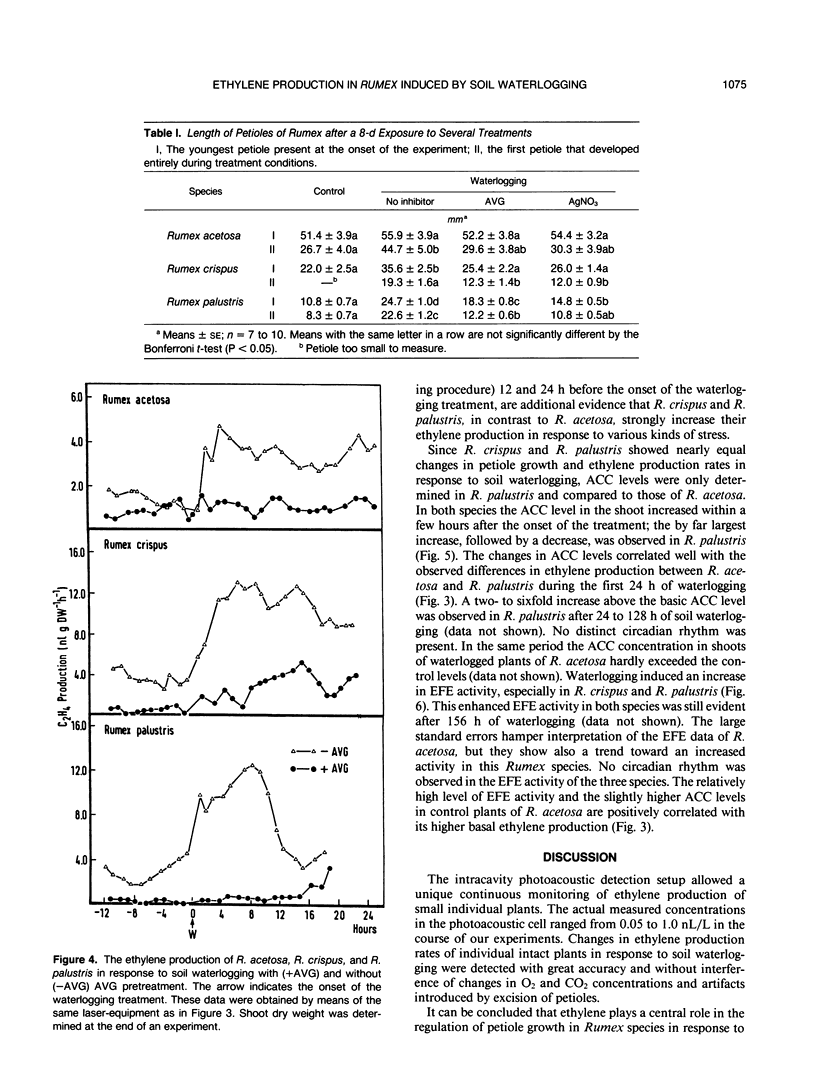Abstract
Petiole growth of Rumex acetosa L., Rumex crispus L., and Rumex palustris Sm. in response to soil waterlogging was studied in relation to production of the gaseous plant hormone ethylene. Ethylene production was monitored in a flow-through system and a recently developed laser driven photoacoustic detection system, which allowed ethylene measurements as low as 6 picoliters per liter. R. acetosa showed a two-fold increase in ethylene production correlated with a slight enhancement of the growth of the petiole that developed during the waterlogging treatment. Both R. crispus and R. palustris showed a strong petiole elongation of existing as well as newly formed petioles, which was correlated with a 20-fold increase in ethylene production after approximately 7 days. Increased rates of ethylene production in R. palustris were related to a strong increase in 1-aminocyclopropane-1-carboxylic acid (ACC) concentration and a slight, but detectable, increase in ethylene forming enzyme activity. In R. acetosa on the other hand, only a very small increase in ACC concentration was observed. Changes in ethylene production in Rumex are strongly correlated with variation in ACC content and ethylene forming enzyme activity. The interaction between ethylene production/internal concentration and ethylene sensitivity of the three Rumex species is discussed in relation to their field location in a flooding gradient and their differential resistance toward waterlogging and submergence.
Full text
PDF






Selected References
These references are in PubMed. This may not be the complete list of references from this article.
- Adams D. O., Yang S. F. Ethylene biosynthesis: Identification of 1-aminocyclopropane-1-carboxylic acid as an intermediate in the conversion of methionine to ethylene. Proc Natl Acad Sci U S A. 1979 Jan;76(1):170–174. doi: 10.1073/pnas.76.1.170. [DOI] [PMC free article] [PubMed] [Google Scholar]
- Bradford K. J., Yang S. F. Stress-induced Ethylene Production in the Ethylene-requiring Tomato Mutant Diageotropica. Plant Physiol. 1980 Feb;65(2):327–330. doi: 10.1104/pp.65.2.327. [DOI] [PMC free article] [PubMed] [Google Scholar]
- Bradford K. J., Yang S. F. Xylem Transport of 1-Aminocyclopropane-1-carboxylic Acid, an Ethylene Precursor, in Waterlogged Tomato Plants. Plant Physiol. 1980 Feb;65(2):322–326. doi: 10.1104/pp.65.2.322. [DOI] [PMC free article] [PubMed] [Google Scholar]
- Lizada M. C., Yang S. F. A simple and sensitive assay for 1-aminocyclopropane-1-carboxylic acid. Anal Biochem. 1979 Nov 15;100(1):140–145. doi: 10.1016/0003-2697(79)90123-4. [DOI] [PubMed] [Google Scholar]
- Woltering E. J., Harren F., Boerrigter H. A. Use of a laser-driven photoacoustic detection system for measurement of ethylene production in cymbidium flowers. Plant Physiol. 1988 Oct;88(2):506–510. doi: 10.1104/pp.88.2.506. [DOI] [PMC free article] [PubMed] [Google Scholar]


